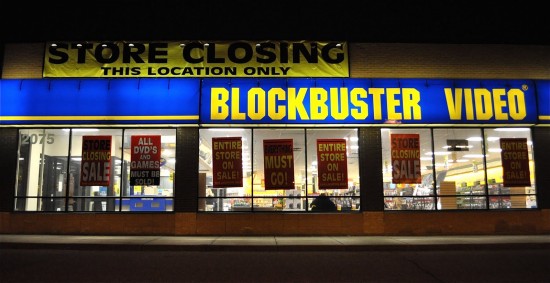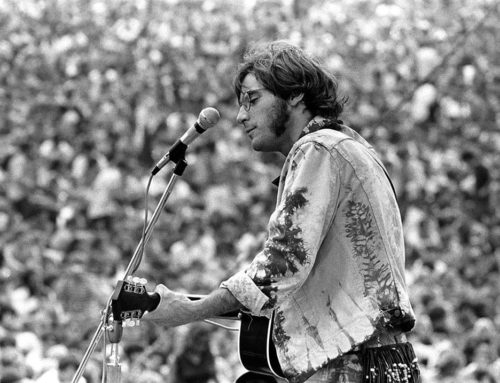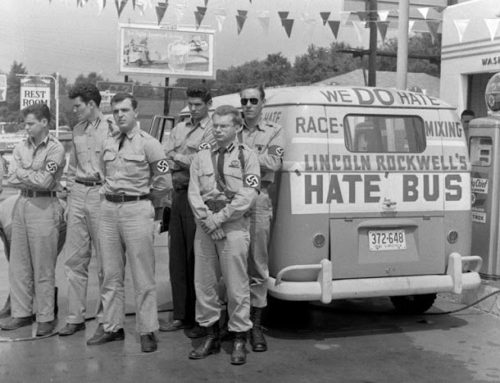
(Continuing live-blogging the new book as I write it. Please remember this is a first draft, with lots of rewriting in its future.)
The man who turned down Sumner Redstone’s invitation to talk. His name was John Antioco, who had earned a reputation as a turnaround expert for troubled brands. He had been in his early forties and was the COO of 7-Eleven when he had been hired away to rescue the troubled convenience store chain, Circle K. He helped take it public for a big profit, making investors seven times their money and making himself a wealthy man. And then he took the top job at Taco Bell, turning the Mexican food chain around just ten months. If there was anyone out there who could rescue Blockbuster, Redstone believed, Antioco had to be the guy.
Ironically, John Antioco had been on the original short list of possible candidates to run Blockbuster when Bill Fields was hired. But he’d been in the closing stages of the Circle K deal at that time and declined to be considered.
Was he declining again?
“No,” Antioco remembers. “My daughter was in a school play that weekend and I needed to stay home. There was nothing more to it than that.”
In fact, John was interested. Although, he hadn’t been available the year before, the fact that he’d been asked piqued his interest and he followed Blockbuster’s progress. And just three weeks after he’d said no the first time, the headhunter called back to tell him that Redstone had tapped Bill Fields.
“They hired the wrong guy,” the recruiter told him. “This will be a disaster.”
And so Antioco spent his year at Taco Bell watching the ensuing debacle at Blockbuster with interest, even fascination. And when Redstone saw Antioco’s name come up the second time, he flagged it. When Sumner had first heard his name, Antioco was simply a guy in the process of turning around Circle K, which didn’t seem like that big a deal. Now, just a year later, suddenly here was a guy who had done miraculous turnarounds at two troubled brands in two years.
And so it was, on a sunny spring Sunday in May, 1997, that John Antioco knocked on the door of Bungalow 8 in the gardens of the Beverly Hills Hotel.
The two men got on well. Both came from similar backgrounds: Sumner started life in a tenement in Boston, John in an apartment in the Red Hook section of Brooklyn, where his father was a milkman.
“From the time I was 8 years old, I was working with him on his truck, doing various tasks. So I always had a business—call it retail—orientation. From a really early age, I had someone saying to me, “Look at that customer, here’s what she needs.”
Sumner nodded. He had watched his own father load his truck with rolls of linoleum to sell door-to-door around the neighborhood.
John talked about what he had learned about business from his father.
“He tried to be a value-oriented service provider,” John explained. “Most of the milkmen there would just deliver white homogenized milk. But you could get anything you wanted from Big John: butter, eggs, cheese, which was kind of a pain, by the way, because there wasn’t a lot of margin in it and you had to sort it out through various parts of the truck, but that’s what they wanted.”
“I think that’s what Bill Fields was trying to do with Blockbuster,” Sumner pointed out. “Load the truck up with everything a customer might want.”
John shrugged. He wasn’t going to start off criticizing his predecessor.
“I’ll tell you, in all sincerity,” John said, leaning in to Sumner as if sharing a confidentiality, “fortunately for me, Fields tried everything I might have tried, given my background.”
“You mean, in convenience stores?”
“Turning those stores into a kind of entertainment convenience store, I would have agonized over that, too, I guess, thinking about what I could put in there that would make an extra buck. So now we’ve got a great roadmap of things that won’t work.”
Redstone was particularly impressed at the level of homework John had done on the stores.
“I wanted to update my database about Blockbuster so, after my daughter’s play, I went around some of the stores in our neighborhood and looked around. It confirmed all my instincts around the issues.”
“Which are?”
“You’ve got a hundred people a night coming in to rent Jerry McGuire, but you’ve only got 20 copies. So you actually have a business model based on giving the customer their second or third choice. In any business I ever ran, there’s nothing worse than being out of stock. If every time you went into a 7-Eleven looking for Bud Light they expected you to walk out with something else, you’d quit going back.
“And I realized that’s why I’d kind of quit being a Blockbuster customer, myself. I mean, from a consumer perspective, I’d pretty much taken myself out of going to a video store on a Friday or Saturday night because I didn’t believe there was any way I’d get the hot new movie I wanted to see. Maybe I’d go in on a Tuesday or Wednesday if there was something I wanted to see, but mostly I gave up as a customer.”
Sumner didn’t see the problem. “Well, if you go to a movie theater and they’re sold out, you go see another movie. That’s the way it is sometimes.”
“I think it’s a different problem in retail. It’s worked so far because people were so hungry for the home video experience, they’d put up with a lot to get their hands on a movie.”
There had also been a pent-up demand to see old movies that hadn’t been seen for a long time. In the eighties, the idea of having a library of movies in your neighborhood was a novelty, a very new and exciting thing. It meant you could introduce your children to movies you loved as a child.
“But how long can this work? You’ve already got people saying the Internet is going to take your business away anyway. How long can the video rental industry survive if your model is based on “managed dissatisfaction?” As they talked through the afternoon, the feeling in the room was strong that Blockbuster and John Antioco would be a good fit.
Sumner and his team pushed for an answer and John pushed back. He still had his problem with the golden handcuffs at Taco Bell.
“We told you, John, money is not an issue.” And so they sketched out a deal offer that made John Antioco whole against his losses at Taco Bell, doubled his current cash compensation, gave him options on Viacom stock plus added significant bonuses based on performance targets, so that he would benefit handsomely if he turned the company around.
And they needed him to turn it around. At this point, Redstone would have paid almost anything for a sure bet to save his empire and John Antioco, with his history of saving brands, was about as sure a bet as you could get.
A comedy is a struggle with a happy ending, and that was the story at Blockbuster from the middle of 1997 to the middle of 2007. Within a year, Antioco and his team had turned customer traffic around and restored the brand’s luster with Wall Street.
When I asked John Antioco how he had been able to turn three companies around so fast—Circle K, Taco Bell and Blockbuster—he said it was pretty simple. He just asked the people in the stores what they needed to make customers happy again.
They began by attacking the problem of product availability and “managed dissatisfaction.” They launched a new marketing campaign—“Go Home Happy”—anchored by “The Blockbuster Guarantee.” Guaranteed In Stock meant that if you came in the store for a hit movie the company had advertised and couldn’t get it, you got it free the next time you came in. but that was just the beginning, getting to the root of the problem required Blockbuster to disrupt the industry. Antioco, who a decade earlier had investigated getting 7-Eleven into the video rental game, came up with an innovation in the business model that literally turned the entire industry on its ear: revenue sharing. Profits at Blockbuster soared. And because revenue sharing allowed Blockbuster to put as many copies of a movie on the shelves as customers wanted, customer satisfaction soared, too.
Antioco and his team, including Brits Nick Shepherd and Bryan Bevin, identified Late Fees as a major source of customer dissatisfaction. But because late fees brought in more than $400 million in revenues, no one had dared touch them. Antioco and Shepherd took the leap and customer satisfaction drove revenues up so high they covered the lost revenue in the first year.
It wasn’t always easy and they didn’t always make the right choices. They were slow to shift from tapes to DVDs and they were slow to establish a meaningful web strategy. As competition increased, movie rentals stagnated and they found themselves fighting for market share in a slowly declining market.
By 2000, consumers had many more choices: cable and satellite channels were offering dozens of all movie channels; the Internet siphoned off customers who were content to surf the web instead of watch a movie; Wal-Mart and other stores were selling DVDs at discounts; rival movie rental chains emerged; and then came Netflix.
And there were internal issues that diverted attention and resources. First the IPO as Blockbuster was spun off from Viacom, then a takeover battle as Blockbuster tried to take over rival Hollywood Video. In both cases, capital that might have been invested in innovation was diverted to deal making.
Enter another major character, Carl Icahn. During the Hollywood Video battle, corporate raider Icahn bought heavily in the stock of both sides and when the deal failed to go through, began a proxy fight to gain control of the Blockbuster board. From 2005 to 2007, he battled the management team at every turn.
But, in spite of these distractions, the Blockbuster team found the winning formula in a program they called Blockbuster Total Access. Total Access allowed customers to do business both on line and in stores. If you rented a movie on line and wanted to see something else, you simply dropped by the nearest store and exchanged it. If you couldn’t wait for a movie to be mailed to you, you could go to the store. And if the store didn’t have what you were looking for, you could order it on line.
Total Access was the 800-pound gorilla of the industry for a brief, glorious time. Hollywood Video had no way to respond—they didn’t have the capital to build an Internet infrastructure—and Netflix had no response either. They certainly couldn’t build 5,000 stores. With a base of 4 million customers (against Blockbuster’s 50 million) they began losing a million customers a year to Blockbuster. It was, for all intents and purposes, game over.
In addition, Blockbuster was moving ahead with the digital future, packaging Blockbuster-branded on-demand movie flows for cable companies.
And so, as the calendar turned to the spring of 2007, it was like a movie scene; gripping and grinning in closing moments of the fiscal year as the credits ran on a ten year Blockbuster saga of success. And that brings us back to the defining moment in Blockbuster’s history, when they had Netflix on the ropes and their future seemed secure.
Every happy ending is just the beginning of the next story, and it’s not always a good one. Here’s what happened to Blockbuster: when the numbers were in for 2006, all the executive team were due full bonuses. And because of the deal Sumner Redstone had offered him a decade before, John Antioco’s bonus was particularly large: more than $5 million. For Carl Icahn, who had used the CEO’s compensation as a cause célèbre in his proxy battle, this was a chance to take a stand. He instructed the board not to pay the bonus and informed Antioco that he could take $2 million or nothing. When the dust cleared from the ensuing fur fight, Icahn was holding Antioco’s resignation and a contract requiring him to pay $24 million in severance.
In the search for a new CEO, Carl Icahn was uncharacteristically hesitant. Instead of tapping then-COO Nick Shepherd (who as much as anyone was the architect of the turnaround), Icahn demurred and thus lost the next leader in management.
During this period, a board member was approached by Jim Keyes, the recently retired CEO of 7-Eleven. Keyes had an unusual offer: if they would make him CEO, he would invest $2 million of his own money in the company. He said he knew how to make Blockbuster a retail powerhouse and Icahn, noting the irony that Antioco had been COO of the convenience store chain a dozen years earlier, must have imagined he was getting a bargain-basement Antioco clone, without what he saw as the onerous contract.
Here begins one of the most curious stories in business history, led by a CEO with the timing and people skills of Richard the Third. Keyes’ first act as CEO was to call a meeting of the Blockbuster executive committee at his private airplane hangar. With his Aston Martin parked in front and his private jet parked downstairs, the message as they met in his upstairs “man cave” was apparently intended to be one of intimidation.
His first actions were exactly those of Bill Fields a decade earlier. He told them that everything they were doing was wrong. He told them they didn’t understand merchandising. He told them he didn’t want to hear about the past or what any of them thought.
Then he dropped the first of several bombs. “The Internet is worthless,” he told them, “and we’re getting out of it.” He explained his belief that no one wanted to rent movies on line. What people wanted was an entertainment convenience store, an “entertainment 7-11.”
He told them he would show them how to maximize revenue per square foot in the stores and he would show them what retailing was all about.
Sound familiar? It was the same strategy that had failed twice before.
Shane Evangelist, the VP of Blockbuster Online, protested but was told to shut up. In a later meeting, Evangelist tried to explain that they could sell their membership list for more than a billion dollars and, again was told to shut up, that the list was worthless. In fact, an astonished Reed Hasting, who could hardly believe his luck at what he was hearing out of Blockbuster, had already obtained permission from his board to pay $1.4 billion for Blockbuster’s on line customer list.
Evangelist left the company, as did Bryan Bevin, the head of stores. The VP of Marketing left, too, and behind them the entire leadership team. Within 90 days, everyone at Blockbuster who had put Netflix on the ropes had resigned. And Keyes continued to run the company from his airplane hangar, alone and increasingly isolated from reality. In the months that followed, the press releases were exactly the same as those put forward a decade before by Bill Fields, but this time the rate of failure was dramatically sharper. Employees left as fast as customer and, as the company went into free fall, Keyes filled the stores with merchandise that bore little relation to the core customer need of a “family movie night.” As a result, Blockbuster went into a death spiral from which it never recovered.
In eighteen months, Blockbuster Inc. lost 85% of its market capitalization, an amount that totaled billions of dollars of shareholder value. Keyes tried desperate moves, including reinstating late fees and trying to merge with the failing Circuit City chain, but nothing could save the company by that point. Consumers had moved on to other options and were not coming back in the stores.
In early 2010, Icahn resigned from the board. At the time, his stock, much of which he had purchased at $10 a share, was trading at 45 cents. Keyes resigned in May of that year and Blockbuster was soon delisted by the New York Stock Exchange. By September, the once proud brand was in bankruptcy.
Once upon a time, Blockbuster was a brand that held enormous power in the heart of millions of people, a brand a generation of young people grew up loving for its promise of movie night. Family life and date nights were centered around the brand.
How did it all go so wrong? If Antioco, Shepherd, Bevin and Evangelist had remained at the controls, what would have happened to Netflix and what would the movie rental or subscription business look like today? Would Blockbuster have stumbled in the same ways as Netflix has in the past few months? Or would they have straddled markets and grown in ways we can’t see?
We’ll never know, but it’s possible that, with a leadership culture forged in the struggles the company went through from 1997 to 2007, they would have continued to make the right deals and followed the right strategy. And that belief is supported by the one true thing that can be said about Blockbuster: when they had clarity of purpose; when they understood what business they were really in and focused on what was right for the customer, the customer always rewarded them.


